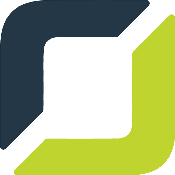Historically, doctors have reviewed charts, deciphered data, and searched endlessly for observable trends that would provide invaluable clues for advancing the medical field. Today, doctors are still responsible for providing the best care to their patients. But they now have tools that simplify and streamline the process so organizations may realize results faster than ever. In this case, we’re talking about healthcare data analytics software.
Data analytics involves dissecting raw datasets to identify trends and draw conclusions for potential improvement. Healthcare analytics uses current and historical data to paint a full picture and provide insights at both the patient and business levels.
Using data analytics in healthcare improves patient care, provides faster and more accurate diagnoses, personalizes treatment, and assists decision-making. These benefits are excellent for patients, but data analytics in health care also leads to cost reductions and streamlined operations, which work well at the business level.
What Is Health Care Data Analytics?

The data also reveals trends associated with location, socioeconomic status, race, and predisposition, and can be segmented into specific datasets for further in-depth analysis. A variety of tools and systems are used to collect, store, share, and analyze health data, including:
- Electronic Health Records (EHRs)
- Personal Health Records (PHRs)
- Electronic Prescription Services (E-prescribing)
- Patient Portals
- Master Patient Indexes (MPI)
- Health-Related Smart Phone Apps and more
The advent of digital data collection has resulted in an exponential increase in healthcare data that requires analysis in real-time. Electronic recordkeeping, applications, and other digital data collection methods contribute to this significant growth.
Because this analysis tends to be complex, traditional processing software and storage options are not ideal for handling these datasets. As a result, cloud storage becomes a necessity. In addition, cloud storage is cost-efficient, highly secure, and has been instrumental in reducing the rising cost of health care.
Big Data Analytics and COVID-19

Big data tools are increasingly crucial in healthcare decision-making for not only medical providers but lawmakers and researchers as well. Additionally, professionals in many adjacent fields regularly turn to predictive models and big data analytics to allocate resources effectively, predict surges, improve patient care and outcomes, and employ preventative measures.
Big data and health data analytics have played a significant role in combating and containing COVID-19. Health data is constantly generated, and analyzing it has led to a better understanding of how to respond to and treat patients.
The pandemic has resulted in a massive surge of health data being collected and analyzed, leading to more comprehensive and improved analytics. Unfortunately, COVID-19 has also exposed significant issues in the healthcare system. One of the major problems is the need for more standardization in collecting and sharing health data across organizations. The public witnessed this issue during the early days of the pandemic when conflicting and constantly changing information was being presented.
As a result, people became skeptical of COVID-related information, and many continued to hold onto false beliefs about how governments should handle the virus. However, the spotlight that COVID-19 shone on these problems provided an opportunity to rectify them. As a result, healthcare providers, researchers, and policymakers are learning from these mistakes and working towards developing a better, more standardized solution for big data in healthcare.
The Importance of Healthcare Data Analytics

Today, we are not limited to reviewing current or historical information. We can also use it for predictive modeling, tracking trends, making predictions, and adopting preventative measures by integrating both datasets and tracking outcomes. Patient-centered, value-based health care is replacing the traditional fee-for-service model, and this shift has led to considerable demand for preventative and predictive measures in public health. Again, data plays a vital role in making this possible.
Practitioners can now identify patients at high risk of developing chronic illnesses and treat the problem before it becomes severe instead of just addressing the symptoms as they arise. Practitioners, insurance companies, and patients save money by avoiding expensive hospitalizations and long-term health issues by providing preventative treatment.
Healthcare data analytics also aids practitioners in predicting risks of infection, deterioration, and readmission if hospitalization is necessary. As a result, it can improve patient care outcomes and reduce costs. This was particularly relevant during the pandemic, as real-time healthcare data analysis allowed us to understand the virus’s effects and predict future trends, helping to slow the spread and prevent future outbreaks.
Types of Health Care Data Analytics
In healthcare, several types of big healthcare data analytics are used to address different types of inquiries. Here are some of the most common types of healthcare analytics and how they are used.
Descriptive Analytics
Descriptive analytics involves using historical data to identify patterns or make comparisons, and it is particularly useful for understanding what has already happened. This type of analysis enables us to gain valuable insights into the past.
Predictive Analytics
Predictive analytics utilizes current and historical data to forecast the future. This type of analysis is ideal for answering questions about what may happen next. With predictive analytics, a deeper understanding of future outcomes can be gleaned.
Prescriptive Analytics
Prescriptive analytics also makes predictions about future outcomes. Machine learning is a crucial factor in this type of analytics.
The information provided helps determine the best course of action. Insight is gained into what course of action should be taken to reach the ideal outcome with prescriptive analytics.
How Data Analytics Leads to Healthcare Solutions

Predictive Modeling
Predictive modeling evaluates current and historical data to forecast future outcomes using data mining, machine learning, and statistics to identify patterns. Health data collected through this process provides solutions on a macro and micro level.
By analyzing behavioral data, predictive analytics can alert healthcare professionals to potential risks, and predict treatment outcomes, chronic illness risks, and even self-harm risks. Health data can be used for risk scoring, predicting infection and deterioration, and preventing readmission at an individual patient level.
The application of predictive modeling extends beyond individual patient care to population health management and administrative functions. For example, using predictive models, you can predict outbreaks, anticipate outcomes, and take preventative measures.
Reductions in Healthcare Costs
These models can be applied in administrative settings to increase efficiency and reduce costs as well. Rising healthcare costs have led to a shift from fee-for-service payment models to value-based care. Healthcare organizations can lower costs and patient risk by using predictive and prescriptive analytics.
In addition to the patient-centric benefits, health data analytics can also reduce appointment no-shows, manage supply chain costs, prevent equipment breakdowns, and decrease fraud.
Health Data Analysts and Their Growing Role
The demand for qualified health data analysts has risen due to the increasing need for improvement in the healthcare sector and the role of big data in health care. Health data analysts use data acquisition, management, analysis, and interpretation skills to provide actionable insights from the collected healthcare data.
The responsibilities of a health data analyst may differ based on their position and industry, but working with, developing, and evaluating health information technology (health IT) and other health information systems is essential in all industries. They may also be expected to:
- Collect or mine data
- Examine current and historical data
- Evaluate raw data
- Build predictive models
- Automate reports
As technology and applications of healthcare data analytics advance, the need for skilled data analysts in healthcare should increase commensurately.
Required Skills for Health Data Analysts

- Structured Query Language (SQL)
- Excel
- Statistical Programming
- Data Visualization
The following skills are also beneficial for success in the data analysis field:
- Analytical thinking
- Creative thinking
- Attention to detail
- Strong communication
While the field is in its infancy, many positions today employ similar skill sets to provide value to an organization. Therefore, professionals regularly using one or more of these skills could consider health data analytics as a viable career moving forward.
Where Will Health Data Analysts Be Hired?
With a growing list of ways to apply data analysis to the big picture, various organizations will make use of health data analysts’ skills and abilities, including:
- Hospitals, private or public
- Government healthcare departments
- Diagnostic centers
- Health insurance companies
- Healthcare consulting companies
- Large medical practices
- Health IT vendors
- Other health organizations
Depending on the type of organization or company, health data analysts might work alone or as part of a greater team.
Orases Can Develop Your Perfect Data Analytics Solution
With so much upside to utilizing healthcare data analytics, now is a great time to start implementing the practice at your organization. Orases develops data analytics and visualization solutions that can automatically gather and process large amounts of raw data.
These solutions enable better decision-making and strategy creation by providing insights into current market trends and patterns through visualizations. So don’t be a face in the crowd as healthcare data analytics come to the forefront. Instead, lead the pack by taking that first step and contacting Orases today or call us at (301)756-5527 for more information.






